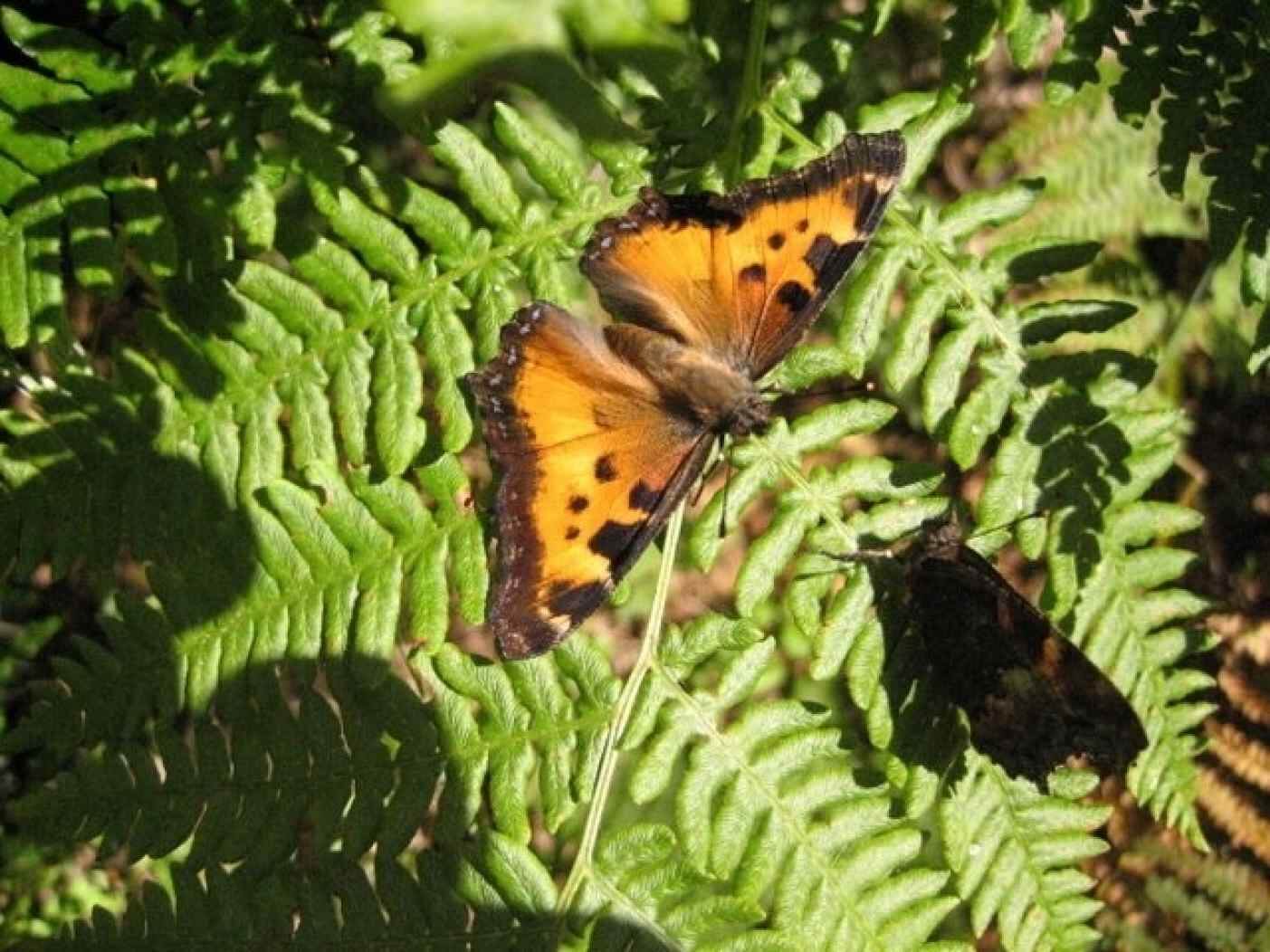I’m seeing more California Tortoiseshells (Nymphalis californica) than usual; it’s a high population year for these butterflies! During the summer months, this species is in the mountains at much higher elevations and then they migrate back down to the lowlands by October. Here, they over-winter as adults, and in early March, mate and lay eggs on ceanothus, right around the time of bud break, while the leaves are still young and tender. By late May, the adults emerge and start flying to higher elevations in the Coast or Klamath ranges, or towards the Sierra Nevadas. On the later emerging mountainous ceanothus species they breed again and stay in the mountains until late in the summer.
The “Torties” that migrate back down to the lowland areas live as adult form until the spring, when the first new leaves emerge on ceanothus. The cold days are spent tucked into small crevices in rocks or tree bark, or beautifully camouflaged by the cryptic coloration of their underwings in leaf litter. On warm winter days, they will fly out to sun themselves or feed at flowers. Tortoiseshells, as well as some other species of butterflies, also get nutrients from animal dung, rotting fruits, and from the honeydew that many true bugs (like aphids) exude as they feed on plants.
California Tortoiseshells are a monophagus species, like the Monarchs, devoted to a particular genus of plants and, like the Monarchs, will use several different species of plants within that same genera. California wild lilacs (ceanothus species) do not confer any special protection in the form of toxic compounds to the Tortoiseshell larvae that feed on them, so the adult female is simply choosing to lay her eggs on the ceanothus species that exhibits fresh new leaf growth.


